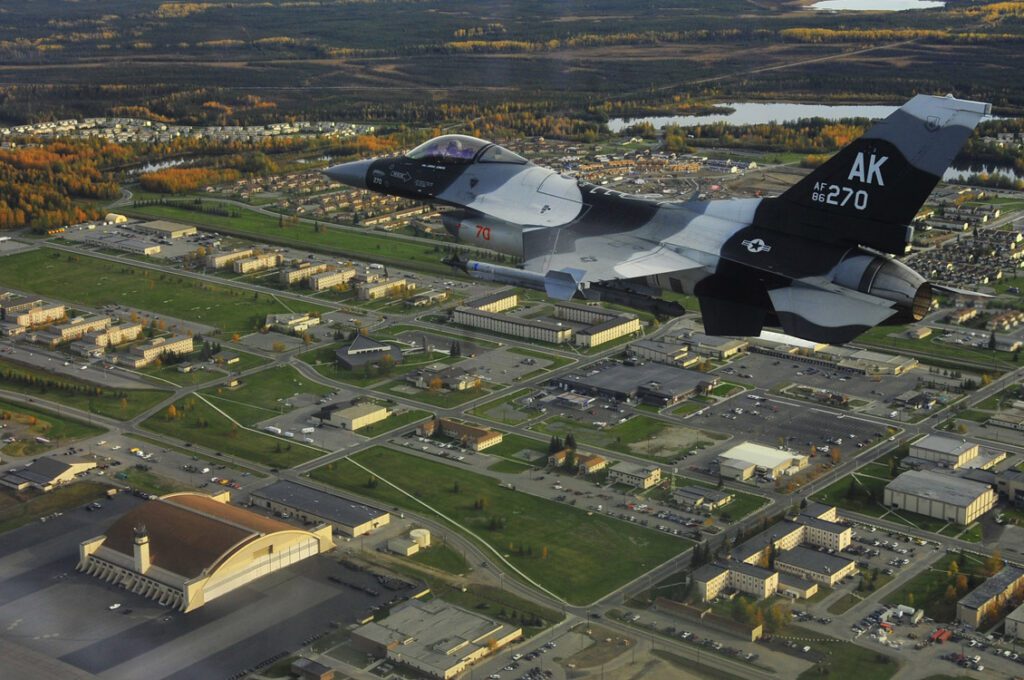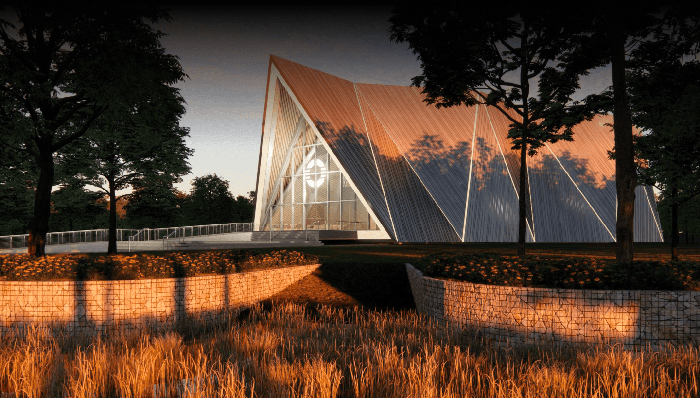U.S. Air Force Selects Fast Microreactor for Nuclear Power Pilot
The U.S. Air Force’s first nuclear microreactor planned for Eielson Air Force Base in Alaska under a federal nuclear microreactor pilot program will be an Oklo liquid metal-cooled fast reactor.
The Defense of Logistics Agency (DLA), acting on behalf of the Department of Air Force (DAF), on Aug. 31 issued a Notice of Intent to Award (NOITA) that selects the Santa Clara, California–based nuclear technology firm’s Aurora Powerhouse for its Eielson Air Force Base pilot and initiates an acquisition process to potentially award Oklo a 30-year, firm-fixed-price contract to pilot the advanced nuclear energy technology.
Initiated in response to a Fiscal Year 2019 National Defense Authorization Act requirement, DAF’s Micro-Reactor Pilot Program seeks to build and operate at least one licensed microreactor by Dec. 31, 2027, that will deliver power and steam to a defense base under a long-term power purchase agreement (PPA). DAF in October 2021 picked Eielson Air Force Base as the site for its first microreactor in part “due to its resilient power needs for mission assurance, limited access to clean energy, existing energy infrastructure and compatible climate,” the agency said.

Oklo will site, design, build, own, and commercially operate the microreactor. DAF, however, will execute a land lease and the 30-year fixed price PPA with Oklo once Oklo obtains a combined operating license from the Nuclear Regulatory Commission (NRC).
DLA’s NOITA builds on a request for proposals issued in September 2022 and which closed on Jan. 31, 2023. DAF said its next steps after selecting a vendor and releasing the NOITA will move to permitting and licensing activities. DAF is expected to begin a National Environmental Policy Act (NEPA) assessment by 2024. Microreactor demonstration and operational testing are targeted to begin by the end of 2027, though that timeline is “tentative and subject to change,” it notes.
A Key Goal: Mission Assurance
According to DAF, the pilot project will explore the microreactor’s potential to provide reliable and flexible carbon-free energy. Microreactors “are equipped with built-in safety features that self-adjust to changing conditions and demands to prevent overheating,” the agency said. “The technology’s ability to operate independently from the commercial grid and reduce greenhouse gas emissions make micro-reactors a promising power source for remote domestic military installations critical to the national security infrastructure.”
On Thursday, Brendan Owens, assistant secretary of Defense for Energy, Installations, and Environment, suggested the pilot at Eielson Air Force Base could play a larger role in future defense energy procurement. “We are watching this project closely and working with the other military departments to identify additional installations where deployment of U.S.-developed advanced nuclear technology will improve power reliability and installation resilience,” he said.
Another Critical Pilot for Oklo
Oklo’s Aurora Powerhouse is a vertically oriented compact passive fast-spectrum reactor derived from the Experimental Breeder Reactor-II (EBR-II) that uses liquid metal as a coolant. The company recently uprated its design’s capacity offerings to between 15 MWe and 100 MWe. The compact fast reactor uses a high-assay, low-enriched uranium (HALEU) metallic uranium-zirconium fuel enriched to about 19%.
Oklo, notably, already has an agreement with with Idaho National Laboratory (INL) to demonstrate down-blended HALEU in a commercial-scale Aurora reactor within a 2026 or 2027 timeframe, and it is seeking licensing for the Idaho Falls project. In March 2020, Oklo submitted the first-ever combined license application (COLA) to the NRC for an advanced non-light water reactor (LWR) for the INL project. While NRC staff in January denied the application “without prejudice,” Oklo in September 2022 formally relaunched the licensing effort with the submittal of a licensing project plan.

The company is pursuing a Part 52 NRC licensing approach. “For a company that is both designing, constructing, and operating a facility, the Part 52 pathway Oklo is pursuing allows for greater speed and repeatability by licensing nuclear power plants of the same design utilizing the ‘R-COLA/S-COLA’ approach. Specifically, the first COLA serves as the ‘reference’ COLA, which can then be incorporated in ‘subsequent’ COLA’s, where future reviews are focused only on the content that changes from the reference application,” it has said. “In other words, Oklo will gain staff approval of its design for both its first deployment and subsequent deployments through its combined license application review, while also receiving approval to construct and operate, pending completion of key inspection and testing.”
In tandem, Oklo has recently marked progress in its effort to procure adequate fuel. While the INL project will demonstrate its use of down-blended HALEU in a commercial-scale Aurora reactor, Oklo earlier this week reached a memorandum of understanding with Centrus—a firm poised to demonstrate HALEU production—for HALEU produced at its Piketon, Ohio, American Centrifuge Plant cascade. The deal could result in a power purchase agreement with Centrus for the off-take of power produced by Oklo’s second and third commercial 15-MWe Aurora Powerhouse reactors, which are planned on a land parcel in Piketon that the Department of Energy in 2018 transferred to community reuse organization Southern Ohio Diversification Initiative (SODI).
—Sonal Patel is a POWER senior associate editor (@sonalcpatel, @POWERmagazine).
Editor’s note: This is a developing story. Please check back for more details.